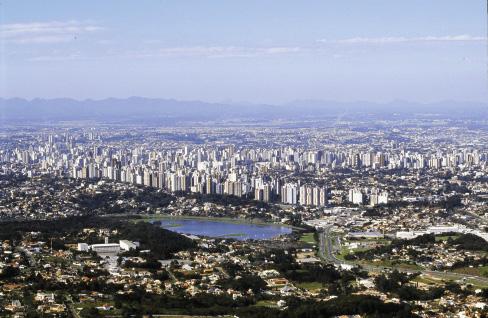
1 minute read
Figure 3.1 Curitiba Cityscape
CASE 1 Curitiba, Brazil
Advertisement
The case of Curitiba, Brazil, shows that cost is no barrier to ecological and economic urban planning, development, and management. Curitiba has developed a sustainable urban environment through integrated urban planning (fi gure 3.1). To avoid unplanned sprawl, Curitiba directed urban growth linearly along strategic axes, along which the city encouraged highdensity commercial and residential development linked to the city’s integrated master plan and land use zoning. Curitiba adopted an aff ordable but innovative bus system rather than expensive railways that require signifi cant time to implement. Curitiba’s effi cient and well-designed bus system serves most of the urban area, and public transportation (bus) ridership has reached 45 percent.1 The city now has less traffi c congestion, which has reduced fuel consumption and enhanced air quality. The green area has been increased, mainly in parks that have been created to improve fl ood prevention and through regulations that have enabled the transfer of development rights to preserve green areas and cultural heritage zones. As part of eff orts to concentrate shops and facilities in the city center and along dense axes, Curitiba’s carfree central city zone (including its main streets and recreational facilities such as parks) has become more walkable, lively,
Figure 3.1 Curitiba Cityscape
Source: Institute for Research and Urban Planning of Curitiba (IPPUC).
and attractive to citizens. Crime has also decreased. In addition, citizens, particularly the poor, are provided with opportunities to participate in environmental activities and educational programs.
The social, economic, and environmental elements of sustainable development in Curitiba have been facilitated by integrated land use, public transportation, and street network plans (fi gure 3.2). Much of the success may be attributed to the Institute for Research and Urban Planning of Curitiba (IPPUC), an independent public authority that handles not only research and planning, but also the implementation and supervision of urban plans. IPPUC has coordinated the various aspects of urban development and ensured continuity and consistency in planning processes amid turnover in city administrations. This is an illustration of successful path dependency in urban development in terms of the spatial, institutional, and cultural aspects.





